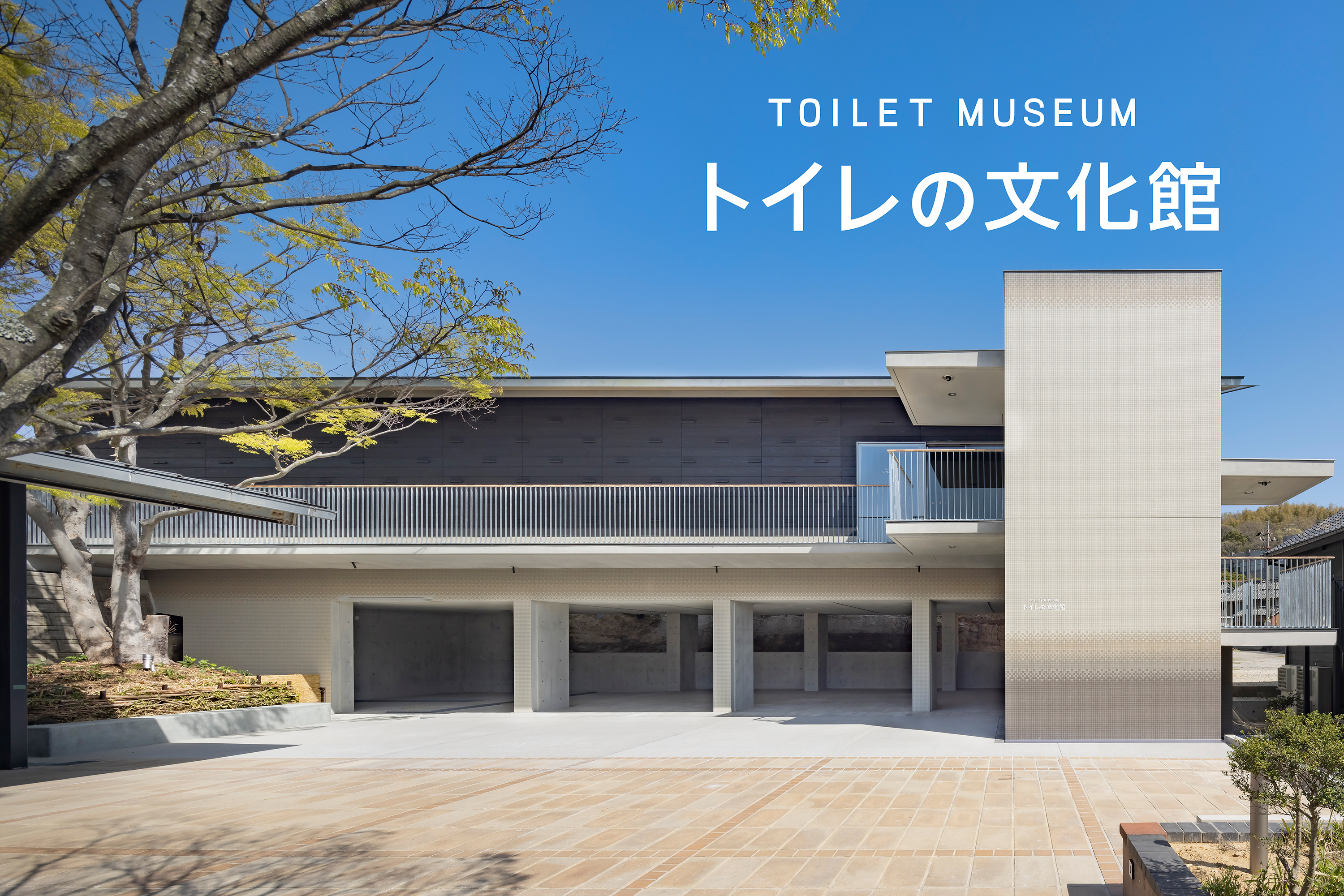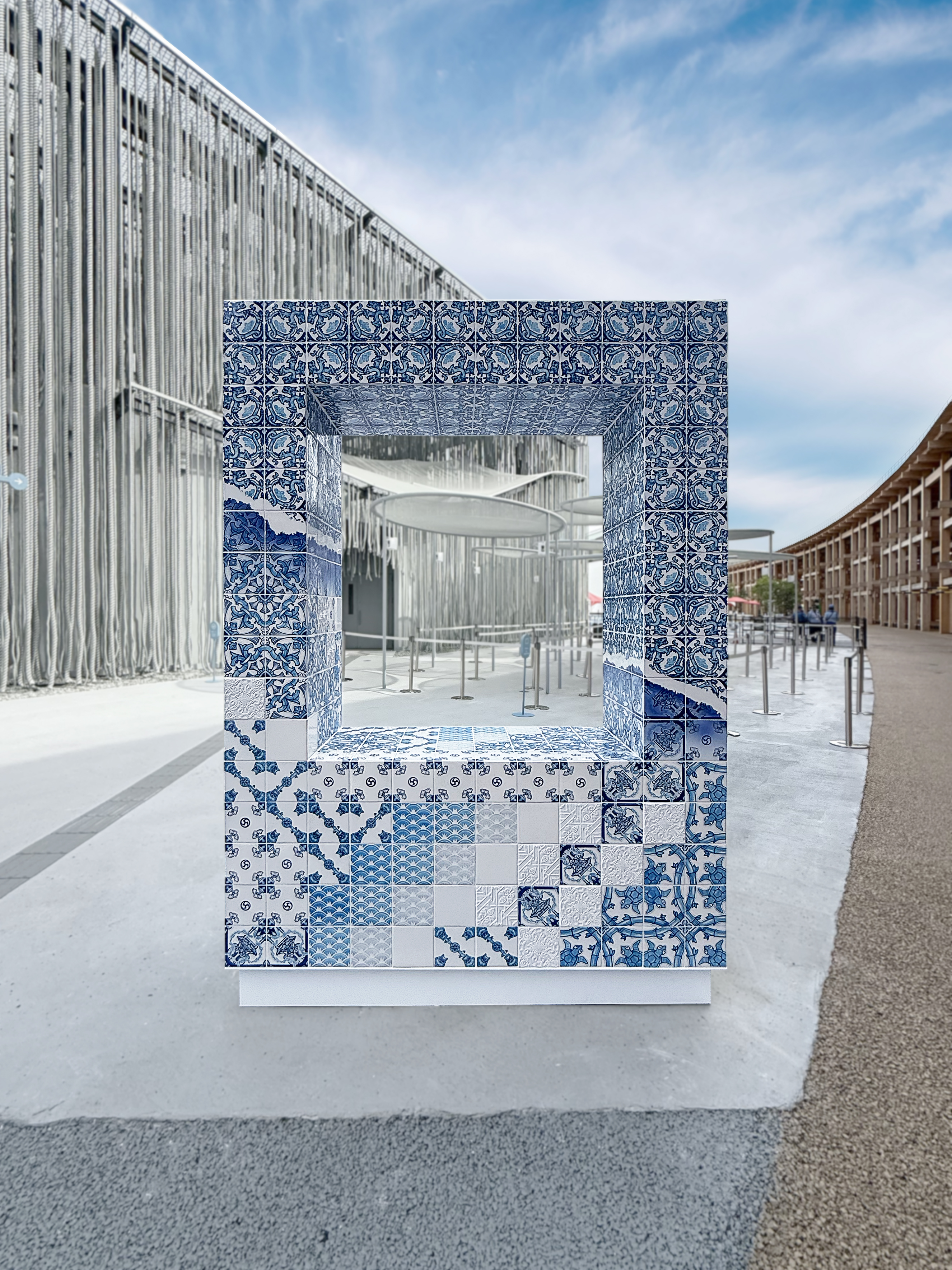INAX MUSEUMS Open Toilet Museum to Present Craftsmanship and Cleanliness of Japanese Toilets to the World

INAX MUSEUMS (in Tokoname City, Aichi Prefecture), a set of cultural facilities managed by LIXIL Corporation ("LIXIL") that conveys the fascinating stories of clay and pottery, has opened a new Toilet Museum showcasing Japanese toilet culture. The new facility opened to the public on Thursday April 17, 2025.
The Toilet Museum has been opened as the seventh facility within the INAX MUSEUMS, commemorating the 100th anniversary of LIXIL's water and tile products. The museum traces the evolution of Japanese toilets from the era of wooden toilets, progressing through the elegantly decorated porcelain toilets, and culminating in modern toilets that incorporate Western flushing techniques and the Japanese spirit of enhancing spaces. It features approximately 50 actual pieces on display and offers a wealth of historical materials.
The exhibition room holds a valuable collection of items, including a restored wooden squat toilet based on pictorial drawings from the Edo period, an antique white porcelain toilet bowl with beautifully painted blue-and-white patterns, and a 19th century British flush toilet, which was invented ahead of the rest of the world. Visitors can also explore Japan's first toilets with a warm water shower spray function (shower toilet) and other renowned toilets that form the history of Japanese toilets. In addition, the first floor, with its concrete aesthetic, and the second floor with its wooden appeal, present architectural highlights such as mosaic tiles made from recycled materials.
Japanese toilets have attracted global attention for their cleanliness and advanced technology. Through this exhibition, we not only showcase the evolution of Japanese toilets, but also share with the world the spirit and craftsmanship of Japan in pursuing cleanliness and purity in the toilet.
<Reference Material>
■「Toilet Museum」 Building Overview
Location: 1-130 Okuei-cho, Tokoname City, Aichi Prefecture (part of INAX MUSEUMS)
Area: approximately, 732㎡ for site area; 260㎡ for building area; 90㎡ for the first floor pilotis; 180㎡ for the 2nd floor exhibition room
Design: HIKI Takuto +MSK associates (jointly with EIJI MORIKAWA Design Office); Construction: Obara Construction Co.,Ltd.
Interior and exhibit: Tanseisha Co.,Ltd.
Building Type: Reinforced concrete/wooden 2-story building with interior exhibition hall
■Background
LIXIL's water and tile business in Japan began in Tokoname city, Aichi Prefecture, which is known as the city of the six oldest kilns in Japan. Established by Ina Seito (later INAX, now LIXIL) in 1924, the company started manufacturing sanitaryware such as toilets in 1945and will celebrate its 80th anniversary in 2025. This 80 years of history has been illustrated with the creation of numerous innovations, including the first domestically produced and marketed shower toilet in Japan. In this milestone year for LIXIL's water technology business, we have opened the new toilet museum to introduce the culture of Japanese toilets to the world.
■ 「Toilet Museum」Highlights
【Exhibit】(2F Permanent Exhibition Room)
This exhibition space is an area where visitors can view the history of Japanese toilets, from its origins, which incorporated the Japanese spirit and sought cleanliness, to its unique development through advanced Western technology, and to the present day.
―Installations― The Spirit and Value of Seeking Cleanliness and Purity in Toilets
Exhibit Items: Ancient Blue-and-white porcelain toilets
1.The Origin of Japan’s "Toilet Culture" Circulation System to Manage Waste
Notable Features: Wooden squat toilet, chamber pot, communal toilet model, restored outdoor toilet, ancient porcelain toilet, lavatory footwear
2. The Beginnings of the Flush Toilet Transition to Modern Toilets from England
Notable Features: Flush toilet from England, white tiles, white toilet bowl
3.Creating a New Toilet Culture Japanese Spirit with Western Technology
Notable Features: Japanese-style dual-use toilet, corner tanks, “Sanitarina 61 - Japan’s first shower toilet (introduced in 1967)
4. A Relaxing Toilet Space From Function to Spatial Comfort
Notable Features: "Restatio" system toilet for residential use, "satis" tankless toilet (introduced in 2001)
ーJapan's Toilet Culture Spreads to People Around the Worldー Setting New Standards With Uniquely Developed Culture and Technology
Notable Features: "AT200LS" American Standard (USA),"SENSIA ARENA"GROHE (Germany)

| Exhibition Room |
(Left ) Morning glory urinal, Blue-and-White Peony Pattern Private collection |


|
Squat toilet of the Edo Castle Honmaru, |
Flush toilet invented in England (Center) Valve-Closet (with separate trap) |


| "SANITARINA 61" toilet arm water shower spray function Ina Seito, launched in 1967 Photo by Yosuke Owashi |
Exhibition Feature: |
About The Building
・RC First Floor Structure with Wooden Second Floor To Convey Warmth
The first floor is a pilotis structure, while the second floor houses a wooden exhibition room that emphasizes warmth through the use of wood. The walls are constructed from 30-cm-long square timber, incorporating the region's historic building methods. The design also expresses the continuity of history through the exterior walls of the adjacent "Kiln Plaza" (built in 1921).
*In Tokoname, fires often broke out at the kiln sites, so the armor walls were fastened to the earthen walls with square timbers and broken nails. In the event of a fire, the square timbers were pulled out and the wooden walls were immediately removed to prevent the fire from spreading.。

・Mosaic Tiles Decorating the Outer Walls
Unglazed mosaic tiles, recycled from discarded tile materials have been used for the building housing the elevator and its surrounding exterior walls. Supervised by LIXIL Ceramics Lab, these tiles have been produced in four colors by varying the mixture ratio of recycled materials. The tiles have been arranged to match the gradation of the exterior tiles of the "tokoname shiritsu togei kenkyuujo (Tokoname City Municipal Ceramics Laboratory)" ,established in 1961 by Sutemi Horiguchi. Created by Chozaburo Ina, these tiles promote the development of ceramics and the pottery industry in Tokoname, paying homage to his contributions.

・FRP (Fiber Reinforced Plastic) Recycled for Painted Walls, Constructed by the Master Plasterer Naoki Kusumi
FRP is widely used as a material for bathtubs and other products, but most FRP waste is disposed of in landfills or incinerated. Master plasterer Naoki Kusumi, who has close ties to the museum, finished the wall surface of the staircase by using materials made from recycled substances by carbonizing waste FRP, significantly reducing CO2 emissions.

All photos except as mentioned in the credits: LIXIL Corporation
Toshihide Kajihara
■About the “Toilet Museum” Logo
The timeless and simple logo symbolizes our quest for cleanliness, backed by 100 years of history, and our desire to create a better future for life.
■About INAX MUSEUMS
1-130 Okuei-cho, Tokoname-shi, Aichi Prefecture 479-8586 Japan
TEL:+81-(0)569-34-8282
Closed: Wednesdays (Open if the Wednesday is a public holiday),New Year holidays
Admission Fee: Adults: ¥1,000, Students:¥800, Junior and high school students ¥500, Elementary school students ¥250
Website:https://livingculture.lixil.com/ilm/
Facebook:https://www.facebook.com/LIXIL.culture
Instagram:https://www.instagram.com/lixil_inaxmuseums/.png?width=199&height=258&name=20250416_ToiletCultureMuseum%20PressRelease%20(2).png)
A cultural facility to be established by LIXIL in Tokoname City, Aichi Prefecture, a technology center for pottery products. On April 17, 2025, “Toilet Museum” opened to showcase Japanese toilet culture. The museum is a “hands-on, experiential museum” consisting of seven buildings: Kiln Plaza, Tile Museum, Toilet Museum, Architectural Terracotta Museum, Clay Works, Tiling Workshop, and the LIXIL Ceramics Lab. The museum conveys the history, culture, beauty, and fun of everything from clay to pottery. The museum also offers hands-on classes, special exhibitions, and workshops that allow visitors to experience the fascination of clay and ceramics.



